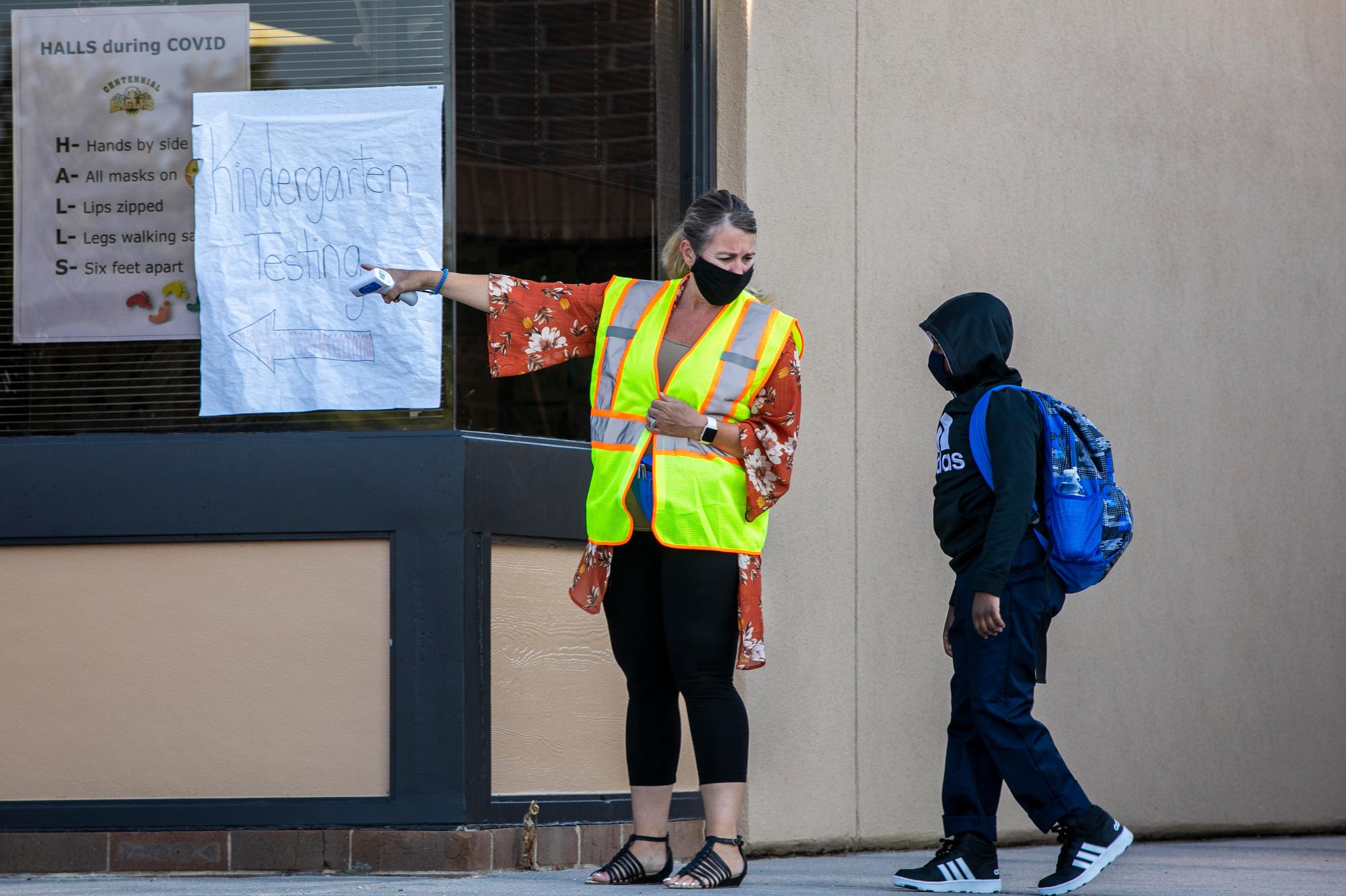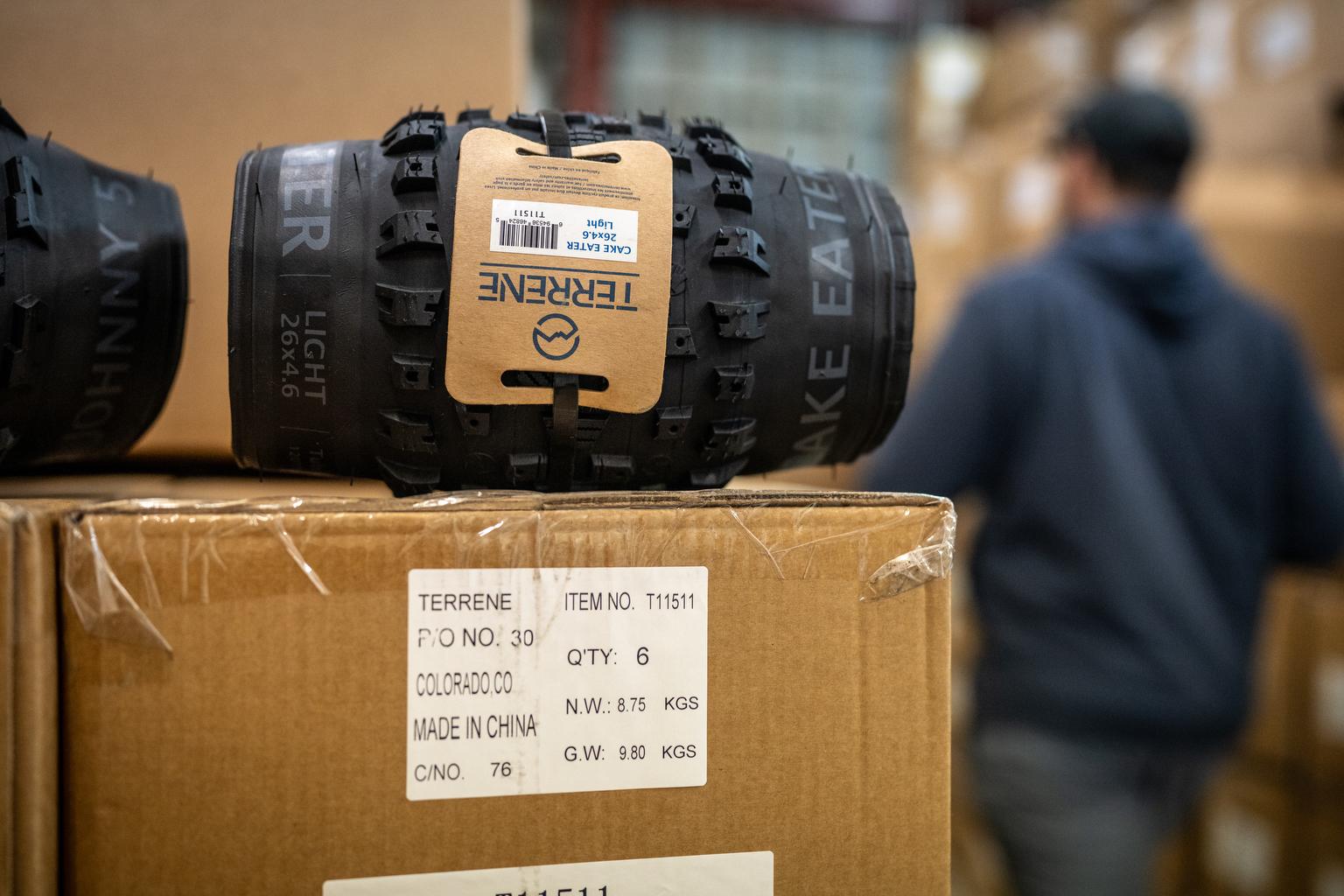
Gov. Jared Polis on Tuesday urged Colorado families to enroll their children in school as some school districts report a sharp decline in the number of students enrolled. Enrollment is down particularly among younger students and regular attendance is also lower in the upper grades.
“We cannot let our children’s future be a victim of a global pandemic,” Polis said at his regular COVID-19 press briefing on Tuesday.
State officials don’t know how many children aren’t attending school but he said “anecdotally” the numbers are worrisome.
At the press briefing, Aurora Schools superintendent Rico Munn, who leads the fifth-largest district in Colorado, said there is a “sharp decline” in enrollment across the state and country.
“That means thousands of our youngest kids, our preschoolers, our kindergartners, are not enrolled in school,” Munn said. “We need to turn that around. We need to change that.”
Aurora confirmed enrollment is down by more than 1,660 students since last year, although they expect more to enroll. Denver Public Schools superintendent Susan Cordova confirmed Tuesday that student numbers are down in Denver too.
The district is seeing enrollment declines of between 1-2% so far. Cordova said some families with 3-, 4- and 5-year-olds have informed the district they are delaying enrollment by a year. Attendance at the district’s alternative high schools is also down, she said.
Polis said addressing the crisis will take ingenuity and creativity. He and Commissioner of Education Katy Anthes urged the business community and individual Coloradans to check on the children in their lives and if they can, donate extra laptops, meals, and transportation to families in need.
"Our teachers are true heroes during this crisis but they cannot do it alone," Anthes said.
The governor announced Tuesday that forty new AmeriCorps members will work with high needs schools from the San Luis Valley to the Front Range focusing on finding "lost" kids and increasing attendance. Polis also announced $2 million in state funding through the Next Step 2-Generation Homelessness Prevention Program to provide housing for 225 homeless families in several districts including Adams 14, Boulder Valley, Sheridan, 27J and Jefferson County school districts.
The implications of not being in school are huge for young children
Education officials at the press briefing stressed that learning loss and the loss of connections to classmates and teachers can have profound implications — developmentally, financially, and mentally — for years to come.
Chris Rogers, president of the Colorado Child and Adolescent Psychiatric Association, said school provides kids with structure and a sense of normalcy. He said a predictable schedule with clear expectations provides a sense of safety and comfort to younger kids and an anchor during the emotionally charged time of adolescence.
“There’s real benefit to having this structured routine,” Rogers said.
- Facing Economic And Family Stressors Amid The Pandemic, Fewer Colorado Students Are Enrolling In Community College
- Family Explains Their Fears After A Toy Gun In Virtual Class Brought Police To Their Door
- Special Education Advocate Says Coronavirus And Online Learning Made ‘A Complex Issue Even More Complicated’
- Inside Room 132: How One Colorado School Embarks On In-Person Learning
He said the lessons kids learn about how to form friendships and deal with conflicts are every bit as important as academics. He said what he hears from youth in the hospital system who are struggling right now is a “total sense of isolation.”
“Maintaining access to these school supports is crucial to combat the epidemic of teen suicide that we saw even before this pandemic,” he said.
Rogers also said parents and students need to adjust their expectations and not push themselves as hard as they have in the past. Every day, he said he sees young people struggling to keep up in classes they previously found manageable.
He said just “doing OK” is a great goal for families during the pandemic.
Low enrollment impacts school districts financially
The number of children enrolled determines how much money school districts get from the state. Lower numbers could mean fewer teachers, bigger class sizes, and fewer program offerings.
Colorado typically counts the number of students in class in each district on Oct. 1. But this school year, the state gave districts flexibility in how they count: for example, students’ completion of performance tasks or tracking attendance online using different metrics. Still, if numbers stay down, districts are worried, particularly as they face challenges including a teacher and substitute shortage.
“I’m hopeful that as a state we’ll be able to continue to invest in education,” DPS’s Cordova said. “There hasn’t been a time like this ever before and frankly the need is so significantly higher than it has been in past years I think it’s going to be really important that we focus on how we can maintain steady funding for school districts.”
State agencies Tuesday also issued revisions for schools on outbreak guidance, including tools for mitigating the risks of COVID-19 and limiting how many people will be required to quarantine.









